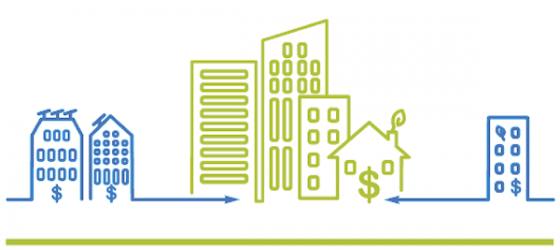Green Building Community
The Heat or Eat Dilemma: The Disparity in Gains of Energy Efficiency
Posted by: YijunW

For many residents in New Orleans, energy costs could take 20 percent of the money from their income (Michael Issac Stein). Andreanecia Morris, the executive director of a non-profit housing advocacy called HousingNOLA, said, “We’ve got folks wrapped around the block. There are people here paying 300, 400, 500 dollars a month. Some are paying utility bills that are as much as their mortgage”(Michael Issac Stein). In the United States, energy costs accelerated at three times the rate of rent between 2000 and 2010, widening the disparity in energy bill burdens between low-income and high-income households (Michael Issac Stein). Low-income households typically pay a higher percentage of income for utilities (Kate Giammarise). Lower-income families are more likely to undergo housing with heating difficulties like heating equipment breakdowns and inept insulation. “[E]nergy costs tend to be comparatively higher (for low-income families), thus reducing their ability to purchase other basic necessities of life such as food, as they face the ‘heat or eat’ dilemma,” professor Diana Hernandez from Columbia University, wrote in her paper "Energy Insecurity among Families with Children" (Kate Giammarise). Higher energy burdens for families can lead to “many negative long-term effects on their health and well-being,” the American Council for an Energy-Efficient Economy researchers noted, such as greater risk for respiratory diseases, increased stress, and difficulty in moving out of poverty. In a 2016 study carried out by the American Council for an Energy Efficient Economy (ACEEE) and Energy Efficiency for All (EEFA): Lifting the High Energy Burden in America’s Largest Cities— How Energy Efficiency Can Improve Low Income and Underserved Communities, showed that low-income households, renters, African-American households, and Latino households paid more for utilities per square foot than the average household, pointing out that they live in less efficient housing. Statistics show that the energy burden for the low-income group is 7.2% of their household income, which is more than two times than the average households, 3.5%. One reason for the energy-burden gap is that the energy bills do not discriminate between the rich and the poor. Everyone pays at an equal rate. Anne Evens, CEO of a non-profit urban sustainability organization called Elevate Energy, said that “Energy is not discretionary. [Regardless of our income level, w]e need the energy to refrigerate our food, to heat our homes.” The other reason is that low-end housing is significantly less energy-efficient than other housing stock. Households with low income are not paying a greater proportion of their income for energy. Rather, they are paying more energy bills per square foot. To read more, please visit: https://bit.ly/1rFFIyp https://bit.ly/2xD7rr6 https://bit.ly/2uio4TN http://www.nccp.org/publications/pub_1086.html
Please be kind and respectful!
Please make sure to be respectful of the organizations and companies, and other Rate It Green members that make up our community. We welcome praise and advice and even criticism but all posted content and ratings should be constructive in nature. For guidance on what constitutes suitable content on the Rate It Green site, please refer to the User Agreement and Site Rules.
The opinions, comments, ratings and all content posted by member on the Rate It Green website are the comments and opinions of the individual members who posts them only and do not necessarily reflect the views or policies or policies of Rate It Green. Rate It Green Team Members will monitor posted content for unsuitable content, but we also ask for the participation of community members in helping to keep the site a comfortable and open public forum of ideas. Please email all questions and concerns to admin@rateitgreen.com

